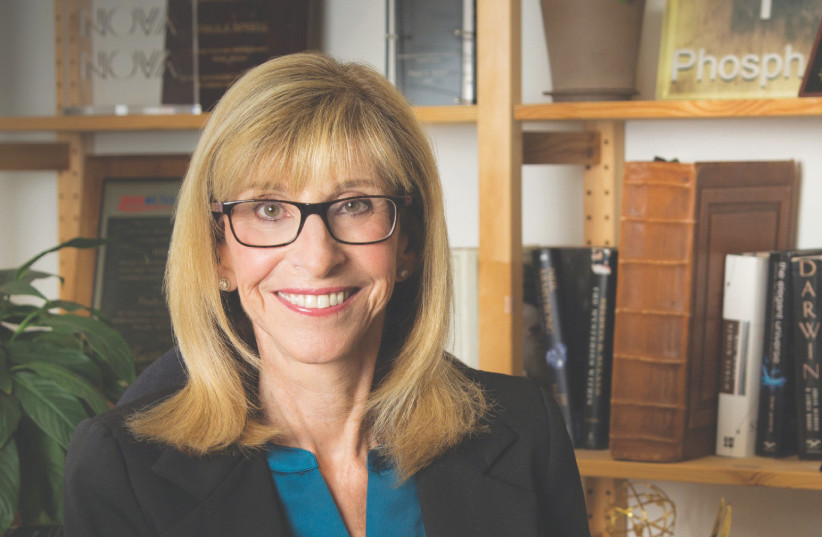The Warsaw Ghetto Uprising is very well known. But most people think that it was the one time Jews fought back, and do not realize how prevalent Jewish resistance to Nazi barbarism was, says Paula S. Apsell, producer of the new documentary Resistance – They Fought Back.
Filmed in Poland, Lithuania, Latvia, Israel, and the US, the film, which will be screened on Saturday, January 27 at the Tel Aviv Cinematheque, provides a much-needed corrective to this myth of Jewish passivity. There were uprisings in ghettos large and small, rebellions in death camps, and thousands of Jews fought as partisans in forests. Everywhere in Eastern Europe, Jews waged campaigns of nonviolent resistance against the Nazis.
“The feature documentary got its start on a sunny June day in 2019 at my kitchen table in Boston during a visit from Holocaust scholar and archaeologist Richard Freund,” wrote Apsell in an email.
“In 2016, Kirk Wolfinger, his team from Lone Wolf Media, and I had made a documentary for the PBS NOVA series following Dr. Freund and his team as they discovered an underground escape tunnel in a forest in Lithuania where the Germans and their Lithuanian collaborators murdered 70,000 Jews.
As we learned when our film aired the next year, very few people had ever heard of this tunnel dug with spoons by shackled Jewish prisoners, twelve of whom escaped to fight with the partisans.

But it is far from the only example of Jewish resistance during the Holocaust. When I asked why such examples of Jewish heroism were not more widely known, Dr. Freund quipped, ‘Because you haven’t made the film yet.’”
Apsell took the response as a challenge. “I had just retired after 35 years as NOVA’s Executive Producer, and I was looking for a project to engage my mind and my heart. And what could be more worthwhile, more challenging to research and recount, than this largely unknown story of Jewish resistance during the Holocaust? As I would learn, many stories of Jewish resistance have all but vanished.
In some cases, no historical records exist, and no one survived to tell the tale. The Germans documented many aspects of their war against the Jews, but they were allergic to any mention of Jewish resistance, leading many to think it never happened and to believe that ‘Jews went to their deaths like sheep to the slaughter.’”
The story is told by survivors and expert witnesses
Resistance – They Fought Back is a passionate refutation of that way of thinking. Told by survivors, their children, and expert witnesses from the US, Israel, and Europe, it is a revelation based on extensive research of how the Jews of Europe fought back.
It uncovers evidence of nonviolent methods that served as crucial tools of resistance and evolved into Jewish armed revolts in ghettos, forests, and death camps, even as the odds of success were astonishingly small.
Today, almost 80 years after the Holocaust, this story remains largely unknown to the general public. Without it, our understanding of this genocide, which wiped out two-thirds of European Jews, remains incomplete, giving rise to renewed antisemitism, hatred, and denial of the Holocaust itself.
It took four years to produce the feature documentary Resistance – They Fought Back during which challenges abounded, some predictable when we began, others totally unknown.
First, the team faced not only expected budgetary difficulties but also the COVID-19 pandemic, which delayed the work. Utilizing Zoom they managed to overcome some of the challenges.
“Amazingly, we were able to locate and speak with five actual survivors who played a role in the resistance of several ghettos, camps, and partisan brigades. But when it came to shooting in Eastern Europe during the summer of 2021, they needed to get the crew to mask up and head to Latvia, Lithuania, Poland, and Israel,” said Apsell.
“We felt it was crucial to go to places where resistance occurred in order to show it was widespread and not limited to known locations like the Warsaw Ghetto. In the Vilna Ghetto, Vitka Kempner was the first to derail a German troop transport train, using a homemade bomb.
In Riga, Latvia we learn that resistance began almost as soon as the ghetto was set up. And out of seven death camp uprisings, six were led by Jewish prisoners. But in most places, armed resistance was difficult, even impossible, since weapons were hard to come by and national resistance movements were reluctant to part with their supply. What distinguishes our film is its emphasis on nonviolent methods as crucial tools of resistance, especially in the early years of the war.”
Apsell stressed that one of the primary motives for the film is to combat ignorance of what happened in the Holocaust.
“Surveys indicate that two-thirds of millennials in the United States cannot identify the infamous concentration camp Auschwitz. In the UK, surveys suggest that 1 in 20 people don’t believe the Holocaust happened, and one-third of people from seven surveyed European countries know little or nothing about it,” she said.
